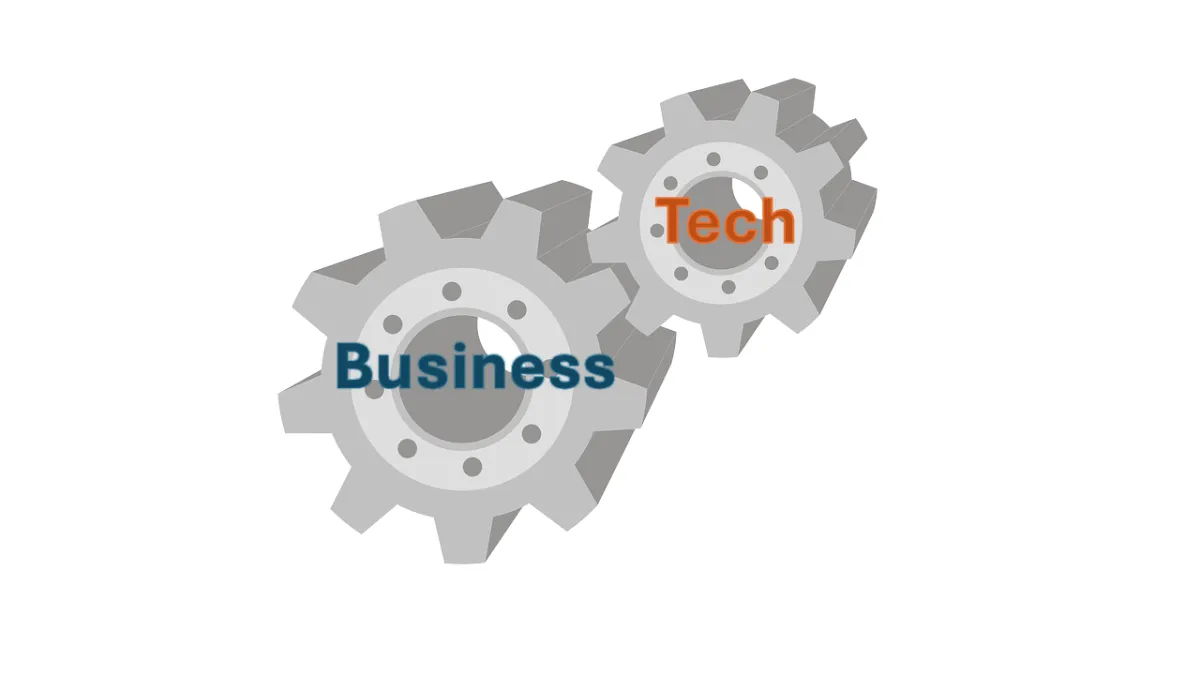
𝗛𝗼𝘄 𝘁𝗼 𝗔𝗹𝗶𝗴𝗻 𝗧𝗲𝗰𝗵𝗻𝗶𝗰𝗮𝗹 𝗪𝗼𝗿𝗸 𝘄𝗶𝘁𝗵 𝗕𝘂𝘀𝗶𝗻𝗲𝘀𝘀 𝗚𝗼𝗮𝗹𝘀
Let’s be honest - there’s often a canyon-sized gap between technical execution and business strategy:
Engineers optimize for performance. Business leaders optimize for outcomes. And somewhere in between, translation gets lost, and value slips through the cracks.
In STEM organizations, alignment isn’t a “nice to have” - it’s survival.
When your team understands why they’re building something, not just how, magic happens. Priorities clarify. Silos break. Results accelerate.
So how do you bridge the gap?
🔍 𝗦𝘁𝗮𝗿𝘁 𝘄𝗶𝘁𝗵 𝘁𝗵𝗲 𝗲𝗻𝗱 𝗶𝗻 𝗺𝗶𝗻𝗱. What does success look like to the business? Not just technically - but financially, strategically, competitively.
🧭 𝗧𝗶𝗲 𝘁𝗮𝘀𝗸𝘀 𝘁𝗼 𝘃𝗮𝗹𝘂𝗲. Engineers thrive when they know their work matters. Help them see how each feature, fix, or upgrade connects to customer impact or revenue growth.
🎯 𝗦𝗽𝗲𝗮𝗸 𝗯𝗼𝘁𝗵 𝗹𝗮𝗻𝗴𝘂𝗮𝗴𝗲𝘀. Tech leaders must translate complexity into outcomes and vice versa. If you can’t explain a project’s value in a single sentence, keep refining.
🤝 𝗜𝗻𝘃𝗶𝘁𝗲 𝗰𝗼𝗹𝗹𝗮𝗯𝗼𝗿𝗮𝘁𝗶𝗼𝗻 𝗲𝗮𝗿𝗹𝘆. Business stakeholders shouldn’t be drive-by requesters. They should be partners in defining scope, trade-offs, and timelines.
When your technical work aligns with business goals, you stop playing defense and start leading the charge. You earn influence, not just respect. And your team becomes a strategic asset - not just a cost center.
𝘌𝘹𝘦𝘤𝘶𝘵𝘪𝘷𝘦 𝘤𝘰𝘢𝘤𝘩𝘪𝘯𝘨 𝘩𝘦𝘭𝘱𝘴 𝘚𝘛𝘌𝘔 𝘭𝘦𝘢𝘥𝘦𝘳𝘴 𝘴𝘩𝘢𝘳𝘱𝘦𝘯 𝘵𝘩𝘦𝘴𝘦 𝘢𝘭𝘪𝘨𝘯𝘮𝘦𝘯𝘵 𝘮𝘶𝘴𝘤𝘭𝘦𝘴. 𝘍𝘳𝘰𝘮 𝘴𝘵𝘳𝘢𝘵𝘦𝘨𝘪𝘤 𝘵𝘩𝘪𝘯𝘬𝘪𝘯𝘨 𝘵𝘰 𝘴𝘵𝘢𝘬𝘦𝘩𝘰𝘭𝘥𝘦𝘳 𝘤𝘰𝘮𝘮𝘶𝘯𝘪𝘤𝘢𝘵𝘪𝘰𝘯, 𝘤𝘰𝘢𝘤𝘩𝘪𝘯𝘨 𝘣𝘶𝘪𝘭𝘥𝘴 𝘵𝘩𝘦 𝘣𝘳𝘪𝘥𝘨𝘦 𝘣𝘦𝘵𝘸𝘦𝘦𝘯 𝘵𝘦𝘤𝘩𝘯𝘪𝘤𝘢𝘭 𝘦𝘹𝘤𝘦𝘭𝘭𝘦𝘯𝘤𝘦 𝘢𝘯𝘥 𝘣𝘶𝘴𝘪𝘯𝘦𝘴𝘴 𝘷𝘢𝘭𝘶𝘦.
